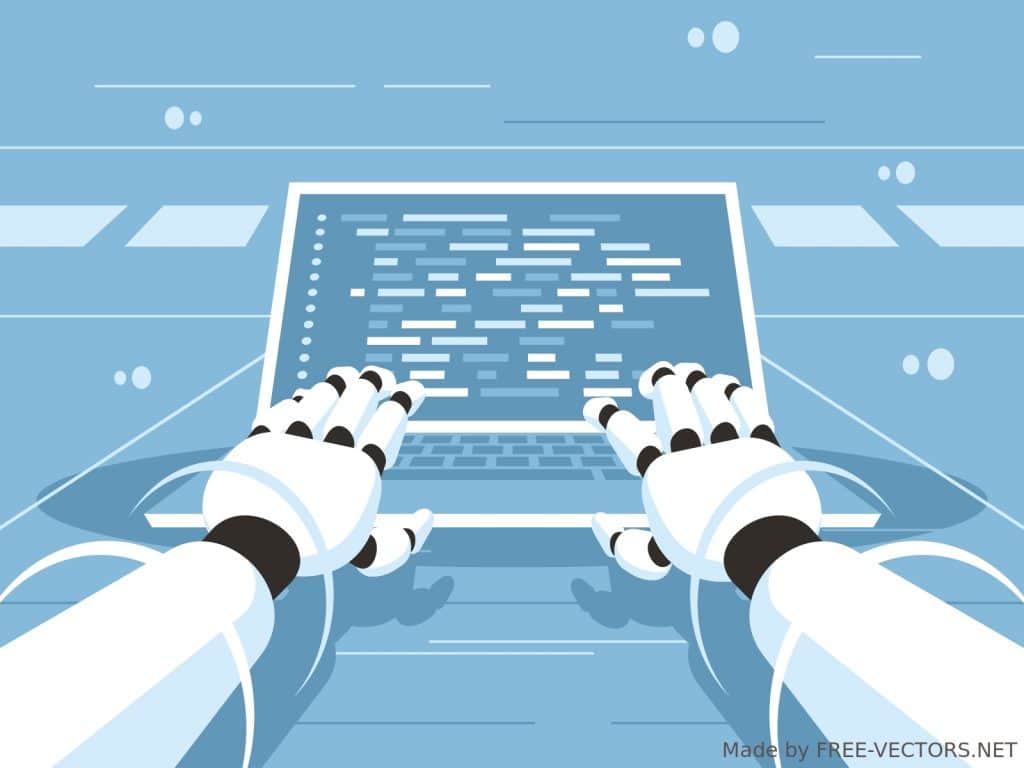Many people believe that AI technology has entered the mainstream and they claim that the use of artificial intelligence is on the rise.
Whether or not that is the case, there is no denying that AI implementation is growing quickly and that it offers a variety of benefits and opportunities. It is predicted that by 2035, AI technology will increase corporate profitability by 38%.
While that’s great for business, how does it affect the people who work in those industries? What does it mean for professionals working in the design sector, specifically? Will UX designers be replaced by AI?
Let’s consider the future of UX designers in this blog.
What is AI?
Artificial intelligence (AI) describes computer programs and devices that have been “trained” to resemble human intelligence. Simply put, AI trains computers to process massive amounts of data, identify patterns within the data, and take appropriate actions as a result.
Tasks that were traditionally done by people are now automated by AI. An everyday example of AI in action is the growing use of chatbots to comprehend and respond to customer inquiries.
Additionally, artificial intelligence is applied to improve current goods and technologies. Recall how Apple expanded their product line in 2011 by including the AI-powered digital assistant Siri? Another excellent example is Netflix, which uses algorithms to recommend TV shows you might enjoy based on your prior viewing history.
Now let’s ask whether AI will replace UX designers.
Will AI be Replacing UX Designers?
PwC predicts that by the middle of the 2030s, up to 30% of jobs could be automated based on their analysis of more than 200,000 positions across 29 nations.
The employment outlook for people, however, isn’t as dire as it seems. The World Economic Forum estimates that by 2025, AI will both replace some human jobs and generate 97 million new ones.
The degree to which automation varies by industry must also be noted. Jobs that depend on social skills and the so-called “human touch” won’t be as easily replaced by AI, despite the fact that sectors like finance, transportation, and logistics are likely to be severely impacted.
What will happen to UX designers?
There is a general belief that AI will neither eliminate the need for UX design nor will it take the place of human UX designers.
There is no doubt that one of the most human-centric professions is UX design. To connect with your target audience and comprehend the issues they are looking to you to solve, empathy is a necessity. UX design needs a profound comprehension of human psychology and the factors that influence how people behave when using goods and services. Naturally, it also heavily depends on cooperation between various human stakeholders.
It’s difficult to picture a scenario in which artificial intelligence could take the place of all that “humanness.” In the end, creating experiences for people needs a human touch. Right now, only humans are able to do that.
That is not to say that AI doesn’t have a place in the world of UX design. Designers have a lot of potential with AI, and it will undoubtedly change how they do their work in the future.
Let’s think about how AI can help UX designers create exceptional user experiences in light of this.

How to Use AI in Design to Create Better UX
The livelihood of a UX designer is not threatened by AI. Instead, it is a powerful tool that UX designers can use to produce top notch user experiences.
UX can benefit from AI by:
- Enabling the collection and analysis of massive amounts of user data
- Allowing more accurate personalization
- Delivering better customer service to users
- Automating some steps in the creation process
- Assisting in closing the accessibility gap on the web
Let’s take a closer look at these possibilities.
Large volumes of user data are easier to collect and analyze thanks to AI
Analytics and data are crucial to the UX design process. The more data you can gather and analyze, the more in-depth your insights will be; whether you’re collecting data as part of your initial user research, conducting A/B tests to determine which version of a design performs best, or analyzing behavioral data to see how your product performs in usability testing.
UX designers will ultimately have a better understanding of what users want and need thanks to AI’s ease of handling large amounts of data.
AI Makes Personalization More Precise
In UX, personalization means giving the user content that is specifically catered to their needs and interests. It customizes the product interface based on who is accessing it using behavioral data and machine learning, a branch of artificial intelligence. This guarantees that the most pertinent information is presented to each individual user. Personalization is thus a potent tool for enhancing user experience and connecting with your target audience.
Better Customer Support Through AI
Many products and services require prompt and efficient customer support in order to provide a positive user experience. For instance, if you’re designing a banking app or an e-commerce website, you want your users to be able to resolve any issues quickly and effectively. The design of customer support into your product using AI is made possible by chatbots, which improve the user experience.
AI-Powered Design Tools Increase Productivity
Although there is currently no threat that AI will replace UX designers, it can be useful in automating some steps in the design process. There are many programs on the market that use AI; in fact, while using some of the most well-liked UX design tools, you may have used AI without realizing it.
Tools like Uizard, an AI-powered prototyping tool, and Khroma and Colormind, which automate the process of creating color palettes. Adobe Sensei is an AI tool that integrates with Adobe software. AI can be useful when it comes to some of the more routine tasks, but UX designers will always need to rely on their own special abilities and creativity.

AI Can Help in Bridging the Accessibility Gap on the Web
One of the guiding principles of UX design is accessibility. Making sure a good or service is accessible to as many people as possible—especially those with disabilities—is the goal. The web accessibility gap is a result of the fact that less than 2% of all websites complies with accessibility standards.
Niv Penso explains in a Forbes article how using AI can significantly increase accessibility:
“AI-powered solutions now make it possible for website owners to make their sites accessible without having to alter their source code. The automatic nature of the process presents a scalable solution to the web accessibility gap. Now, remediation processes can be done on a global scale, to millions of websites and with automatic, ongoing maintenance. More importantly, it can make a huge difference in the lives of millions of people with disabilities worldwide.”
In Conclusion
Reading about the rapid development of AI and the effects it is expected to have in the not-too-distant future can be unsettling. But hopefully this article has allayed some of your concerns about how AI might change the role of the UX designer.
Currently, there is a very slim chance that AI will eliminate the need for UX designers. In the end, UX is overly dependent on the “human touch”; when it comes to creating user-friendly products, empathy will always come first. Although AI will play a bigger part in UX design, we see this as an opportunity rather than a threat. So don’t let AI stop you from pursuing a career as a UX designer. The use of human designers is still prevalent.
The post Will AI Be Replacing UX Designers? appeared first on Creativ Digital.
from Creativ Digital https://ift.tt/TX7W8Oq
No comments:
Post a Comment